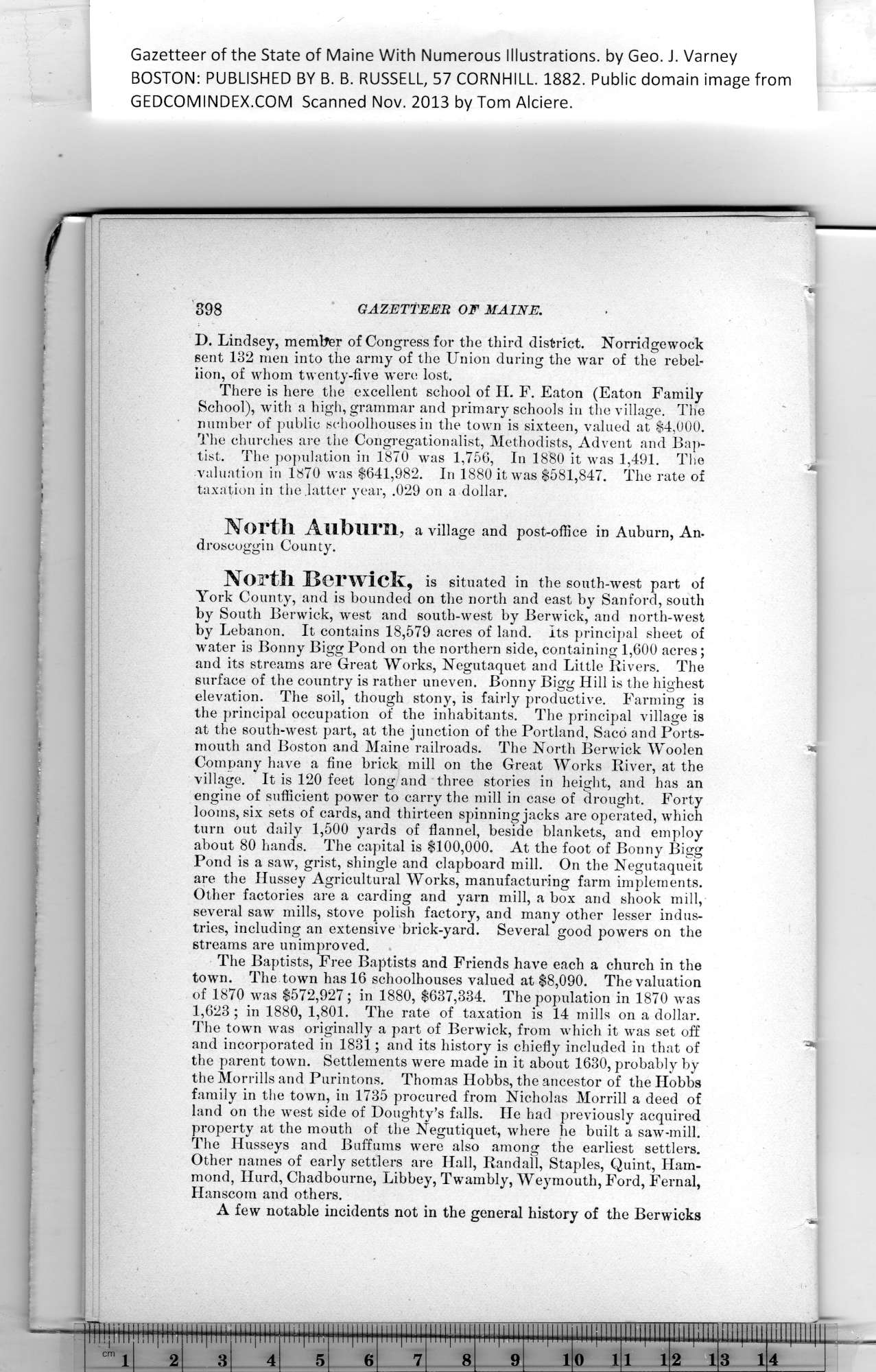Click on the image to view a larger, bitmap (.bmp) image suitable for printing. HOME PAGE ... REFERENCE PAGE ... THIS GAZETTEER’S PAGE |

Click on the image above for a larger, bitmap image suitable for printing.
|
Gazetteer of the State of Maine With Numerous Illustrations, by Geo. J. Varney BOSTON: PUBLISHED BY B. B. RUSSELL, 57 CORNHILL. 1882. Public domain image from ’'m 398 GAZETTEER OF MAINE. ( D. Lindsey, member of Congress for the third district. Norridgewock sent 132 men into the army of the Union during the war of the rebel- There is here the excellent school of II. F. Eaton (Eaton Family The churches are the Congregationalist, Methodists, Advent and Bap- ] taxation in the.latter year, .029 on a dollar. North Auburn, a village and post-office in Auburn, An- drosooggin County. North Berwick, is situated in the south-west part of Company have a fine brick mill on the Great Works River, at the Other factories are a carding and yarn mill, a box and shook mill, The Baptists, Free Baptists and Friends have each a church in the The town was originally a part of Berwick, from which it was set off and incorporated in 1831; and its history is chiefly included in that of ^ the parent town. Settlements were made in it about 1630, probably by the Morrills and Purintons. Thomas Hobbs, the ancestor of the Hobbs family in the town, in 1735 procured from Nicholas Morrill a deed of land on the west side of Doughty’s falls. He had previously acquired property at the mouth of the Negutiquet, where he built a saw-mill. The Husseys and Buffums were also among the earliest settlers. Other names of early settlers are Hall, Randall, Staples, Quint, Ham- Hanscom and others. A few notable incidents not in the general history of the Berwicks ^ PREVIOUS PAGE ... NEXT PAGE This page was written in HTML using a program written in Python 3.2 |